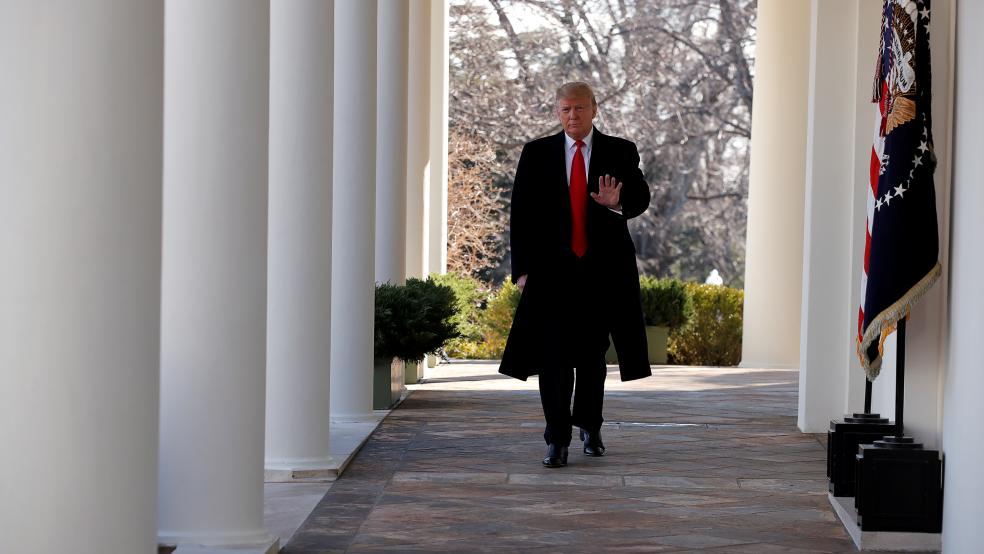Federal employees affected by the 35-day partial government shutdown returned to work Monday — though it will likely be awhile before they can say their lives have returned to normal. Some federal workers told The New York Times that the longest shutdown ever “had left deep scars on their families and finances and undermined their faith in elected leaders, and in the careers they had chosen.”
Here’s what you need to know about the effects of the shutdown and what happens next:
The shutdown cost billions: The five-week shutdown cost the economy $11 billion, though about $8 billion of that will be recovered through a temporary bounce in economic activity over the coming quarters, the Congressional Budget Office estimated in a report released Monday. The $3 billion that will not be recovered represents 0.02 percent of projected gross domestic product for all of 2019. But CBO noted that, “Underlying those effects on the overall economy are much more significant effects on individuals businesses and workers.” CBO said its estimates are uncertain and do not include other, indirect effects of the shutdown. Credit ratings agency Standard & Poor’s estimated last week that the economy lost at least $6 billion due to the shutdown.
When will federal workers get their back pay? It should be by the end of the week, depending on the payroll provider. “Some of them could be early this week. Some of them may be later this week, but we hope that by the end of this week all of the back pay will be made up and of course the next payroll will go out on time,” Mick Mulvaney, acting White House chief of staff, said in an interview Sunday on CBS’s “Face the Nation.”
Will there be another shutdown in February? It’s possible — but unlikely. President Trump, in agreeing to end the shutdown and allow a bipartisan group of 17 lawmakers until February 15 to negotiate a border security deal, warned that he could shut down the government again, or declare a national emergency on the southern border, if they can’t reach an agreement he likes. In an interview with The Wall Street Journal, Trump said he thinks the odds of the congressional negotiators succeeding are “less than 50-50, but you have a lot of very good people on that board.” Trump also said he doubted whether he would accept less than $5.7 billion for a border wall. "I have to do it right," he said.
Still, even if the lawmakers fail to hash out a deal or meet Trump’s funding demand, another shutdown seems unlikely because of the brutal political toll involved. “President Trump has to hold out the prospect of another shutdown because the right wing has proclaimed he's a wimp – but another shutdown has virtually no support in Congress,” analyst Greg Valliere of Horizon Investments says. The Washington Post’s Jennifer Rubin, a Trump critic, was more blunt about Trump’s lack of leverage, and lack of support among Senate Republicans now: “He can huff and puff, but not even Republicans in Congress think they can get away with demanding ‘a wall or else!’ There is no ‘else,’ and everyone but Trump seems to have gotten the message.”
The Washington Post’s Robert Costa and Felicia Sonmez reported Sunday night that Trump may be looking to escalate his wall fight by declaring a national emergency, despite strong opposition from some Republicans: “Inside the West Wing over the weekend, Trump told advisers that declaring a national emergency may be his best option as he scrambles to assert himself in a divided government and secure wall funding, according to four people involved in the discussions who were not authorized to speak publicly.”
Who’s negotiating the border security deal? The 17 members of the conference committee are all on the House or Senate Appropriations Committees. “None of the lawmakers are bomb-throwers likely to buck their party’s leaders, who will retain control over the biggest decisions, including the final price tag and whether anything resembling a wall will be funded,” the Journal says.
- Six House Democrats: The group will be led by the House Appropriations Committee chair, Nita Lowey (D-NY), and will also include Lucille Roybal-Allard (CA), David Price (NC) Barbara Lee (CA), Henry Cuellar (TX) and Pete Aguilar (CA).
- Four House Republicans: Kay Granger (TX), Chuck Fleischmann (TN), Tom Graves (GA) and Steven Palazzo (MS).
- Four Senate Republicans: Richard Shelby of Alabama, the Senate Appropriations Committee chair, Shelley Moore Capito (WV), John Hoeven (ND) and Roy Blunt (MO).
- Three Senate Democrats: Dick Durbin (IL), Patrick Leahy (VT) and Jon Tester (MT).
IRS Says It Will Take a Year or Longer to Recover from the Shutdown: The National Taxpayer Advocate, a government watchdog overseeing the IRS, told House staffers that it will likely take 12 to 18 months for the agency to return to normal operations, The Washington Post reported over the weekend. That timeline assumes the government does not shut down again next month. The IRS has a backlog of 5 million unanswered pieces of taxpayer mail, is weeks behind in training employees on how to implement changes resulting from the 2017 GOP tax law and needs to hire thousands of new employees for the tax season that started Monday.





